I've shared a few photos of the engineering spaces of Iowa before, most notably when I discussed her propulsion system, but I thought it was high time to break out more of them. Let's take an in-depth look at the various systems inside the boiler room. I'd recommend reviewing the post on Iowa's propulsion system first, as I'm not going to go into detail on the mechanics of a steam plant here.
You enter the room from the top, onto the catwalk at the top of one of the boilers. The first thing you see is the steam drum and the water level controls for the boiler.
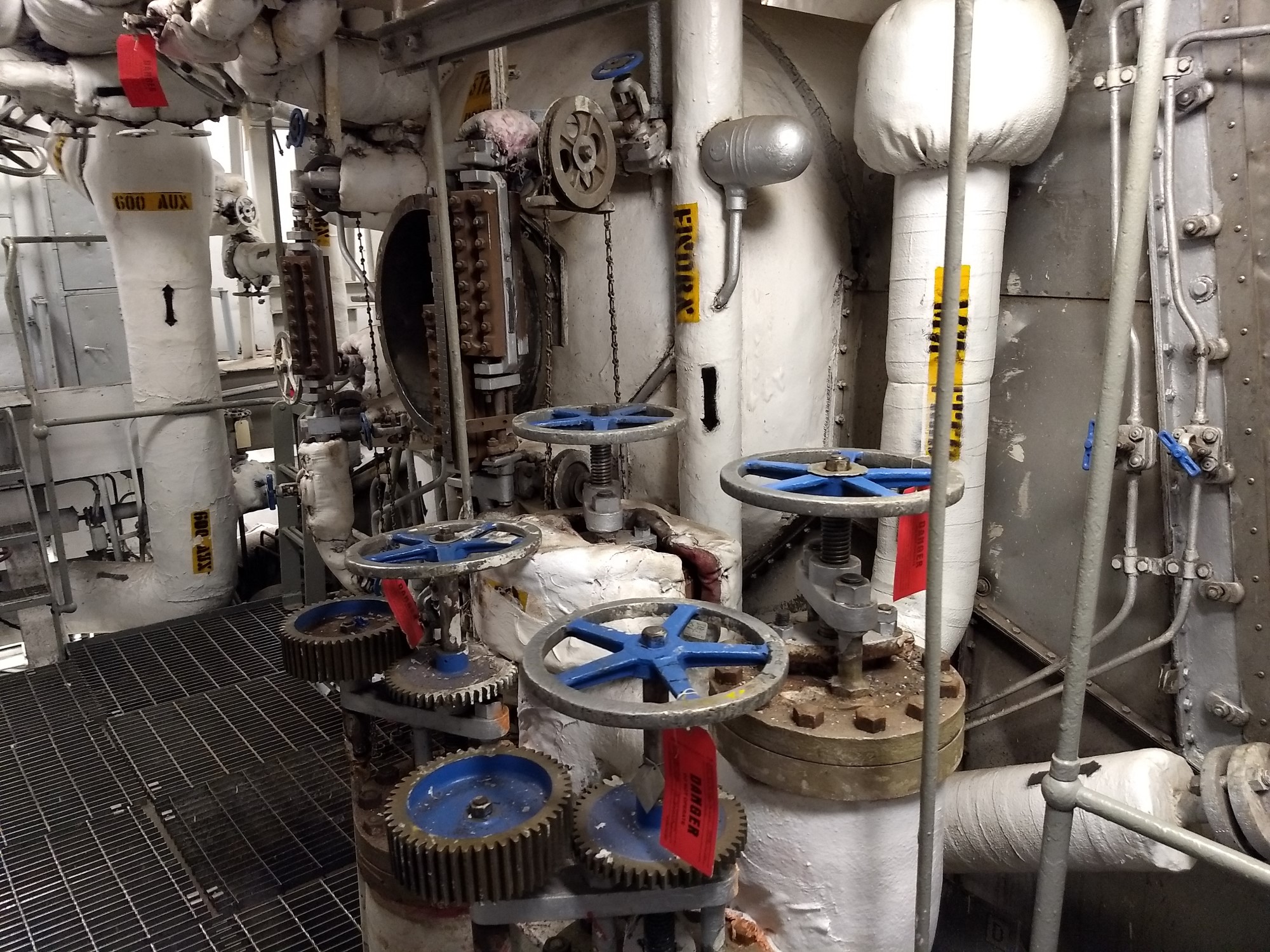
The controls for the water level in the boiler. Too much water, and it gets into the turbines, which is bad. Too little, and the boiler melts, which is really bad.1
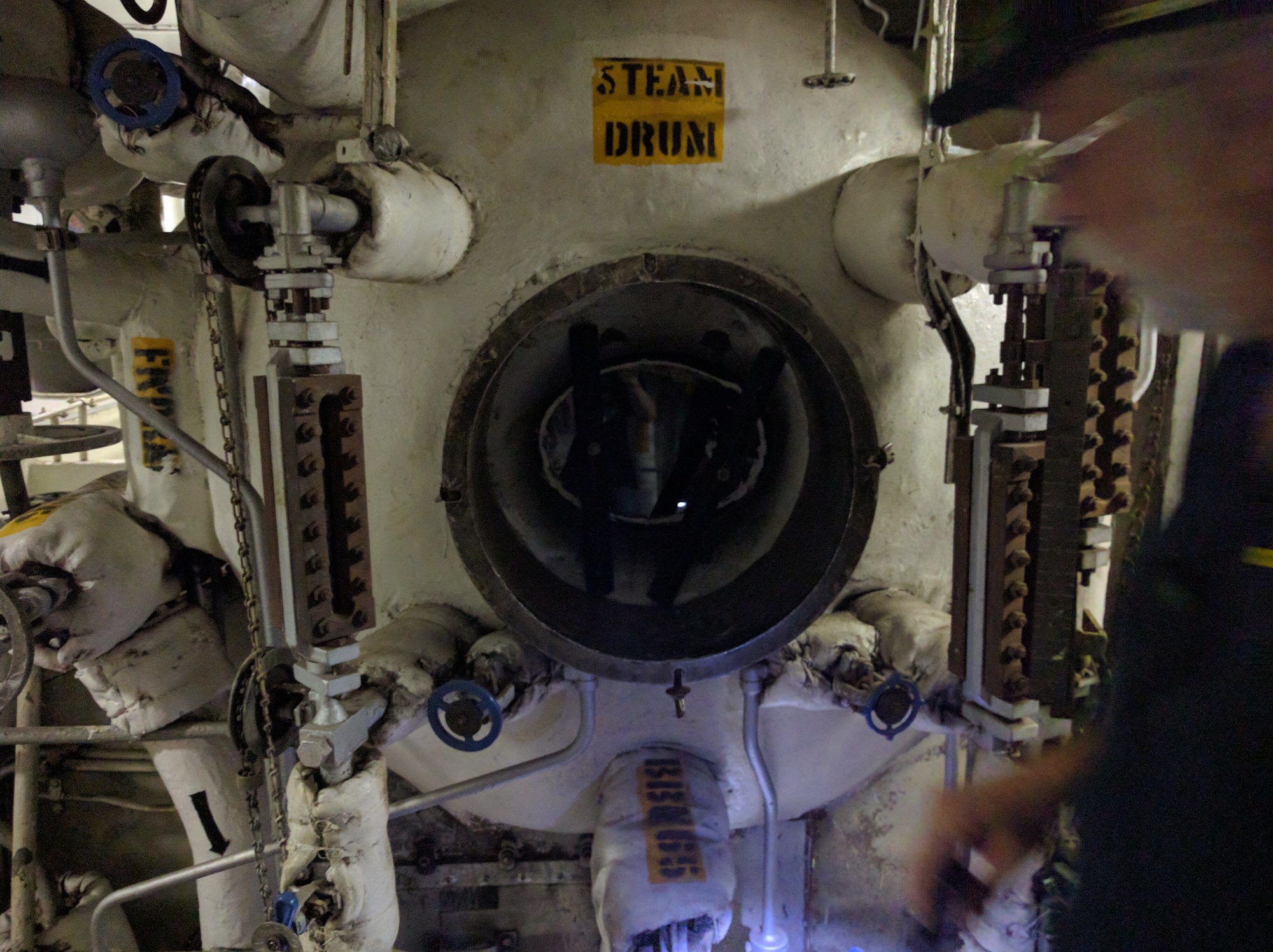
The steam drum, where the tubes empty out and steam is taken from. The vertical objects to either side are sight glasses for the operator to check water level.

Inside the steam drum. The vertical cylinders are moisture separators to remove out tiny droplets of water from the steam sent to the superheater.
Descending a very steep ladder, you come to the face of the boiler, where the burners are located. This was the scene of most of the action for the boiler crew, as they had to match steam supply to steam demand.
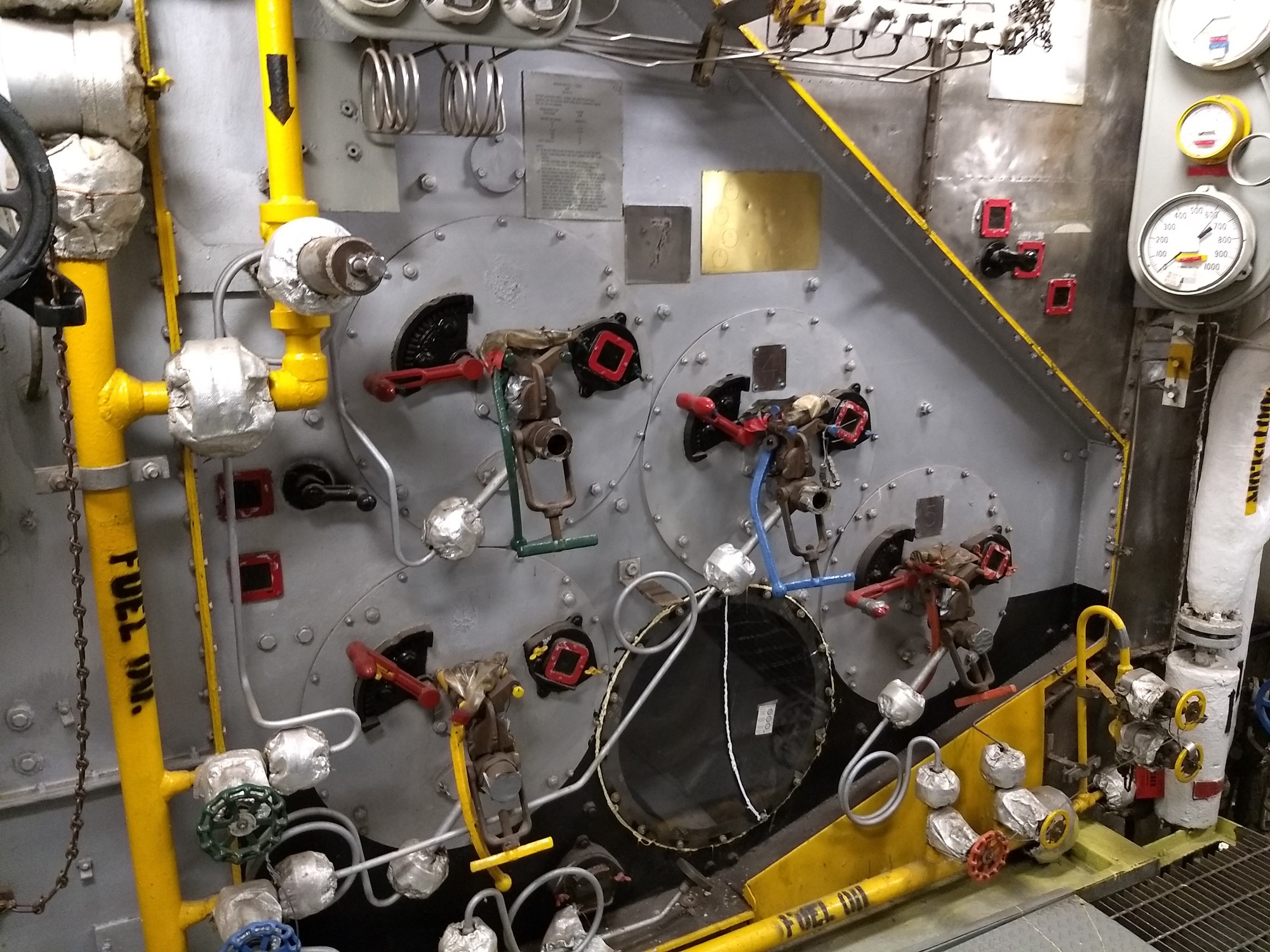
The face of the saturated side of the boiler, with five separate burners. These could be switched on and off as needed.
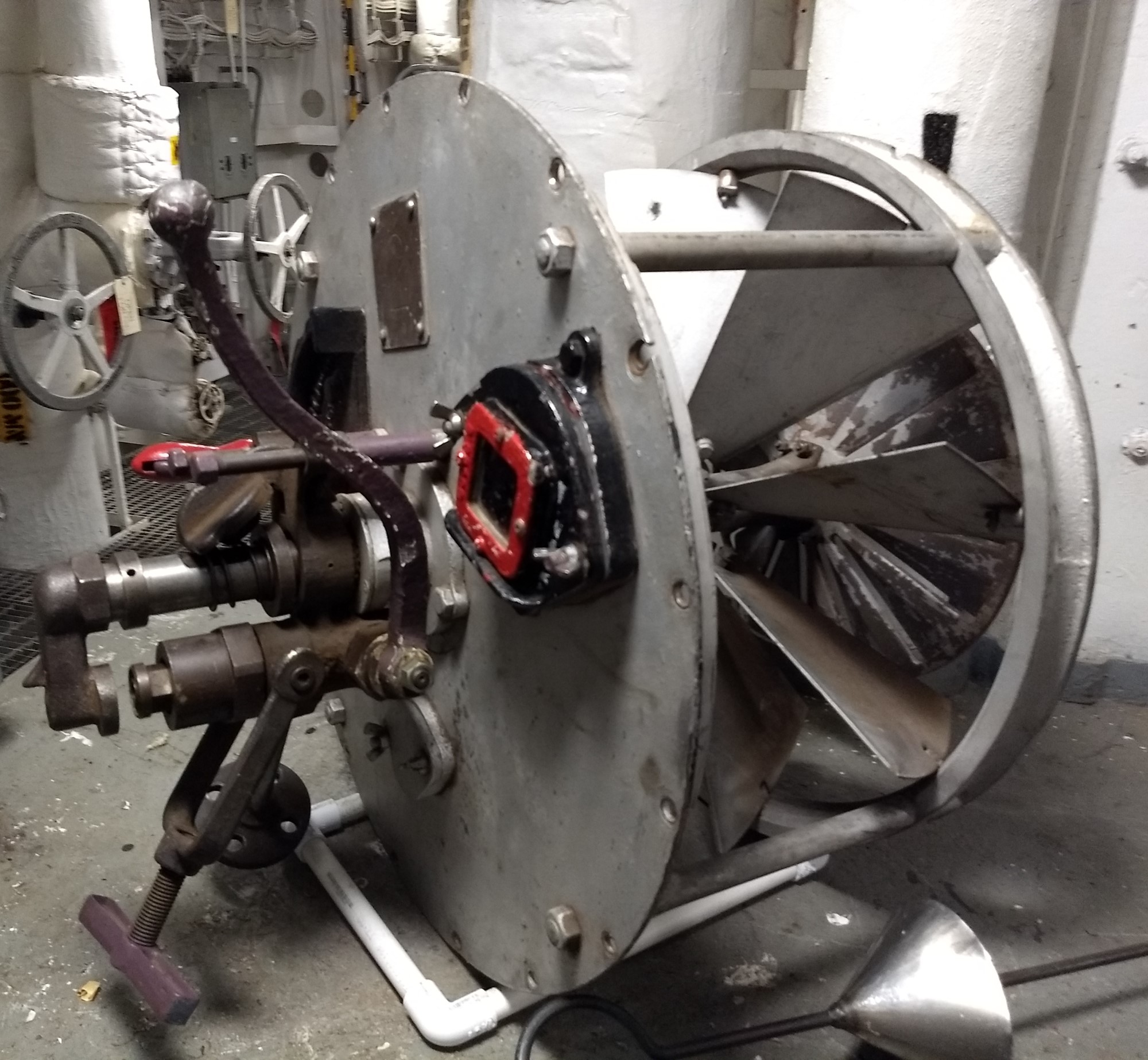
An air register, used to control the flow of fuel and air into the boiler and mix them so they burn cleanly.
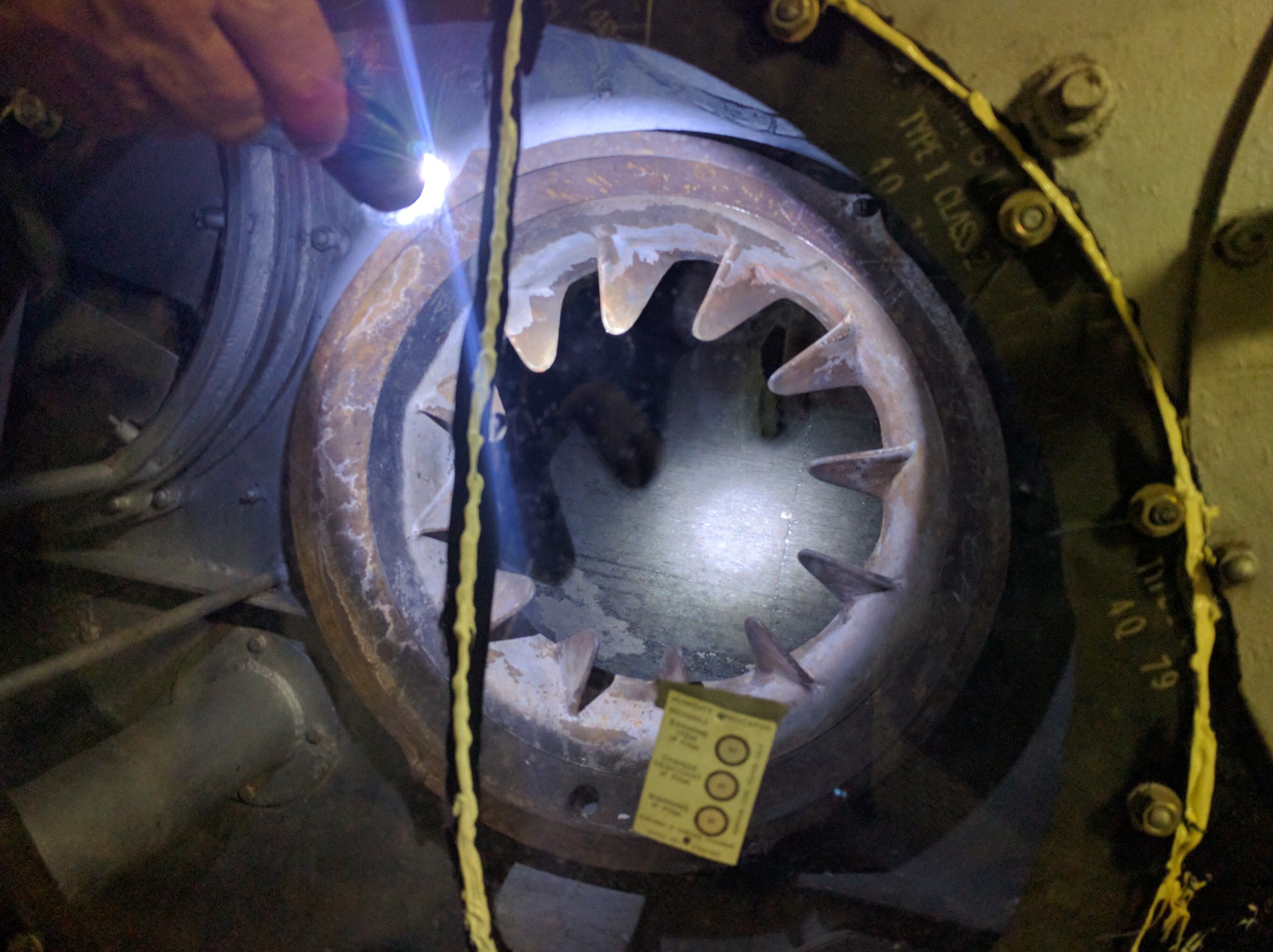
A look into the interior of the boiler, through the removed air register.
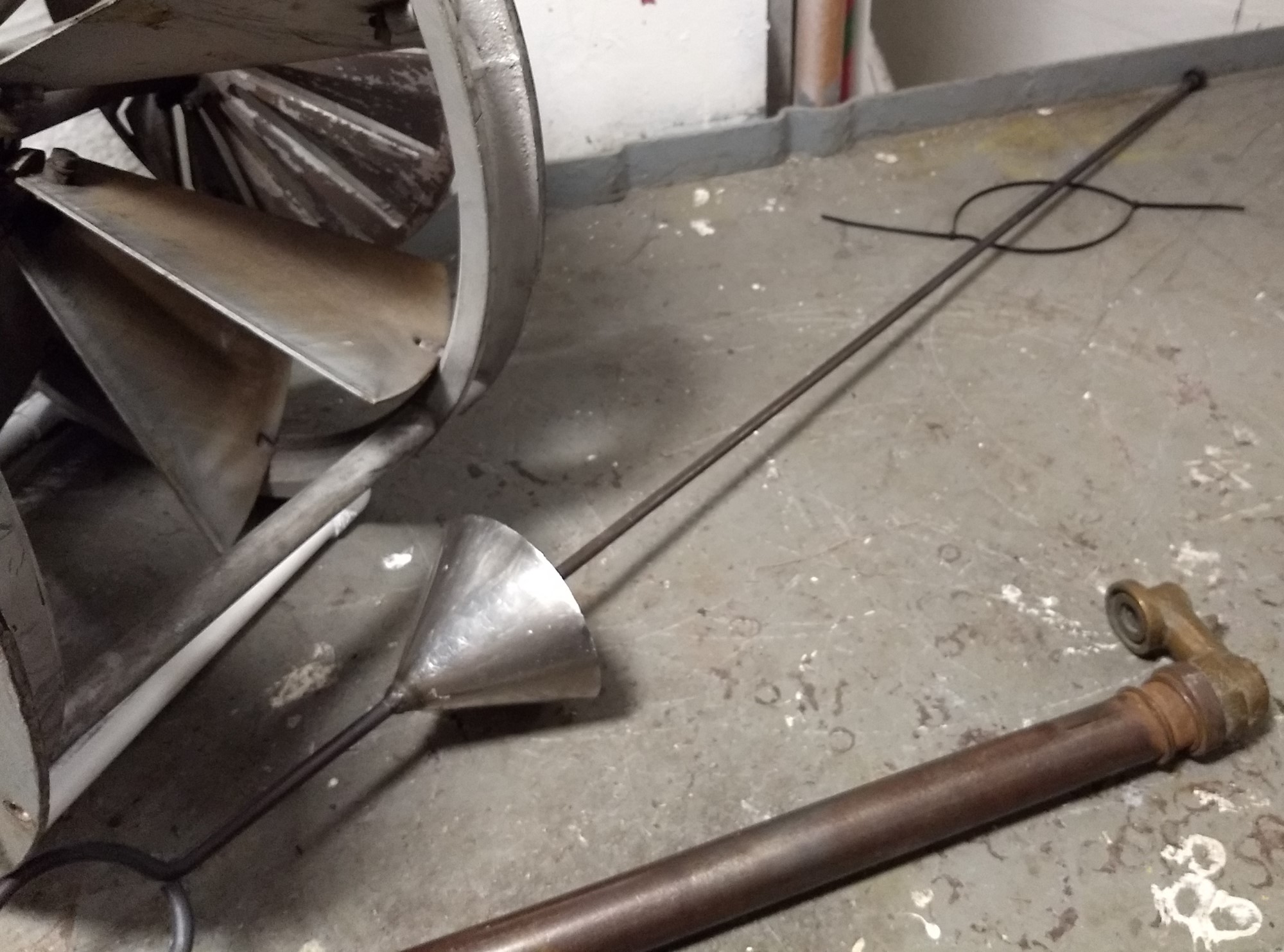
A lighting-off torch. This would have an asbestos rope2 on the end, soaked in kerosene, and the BT3 would light it and stick it in through a small port in the air register, then turn on the fuel.
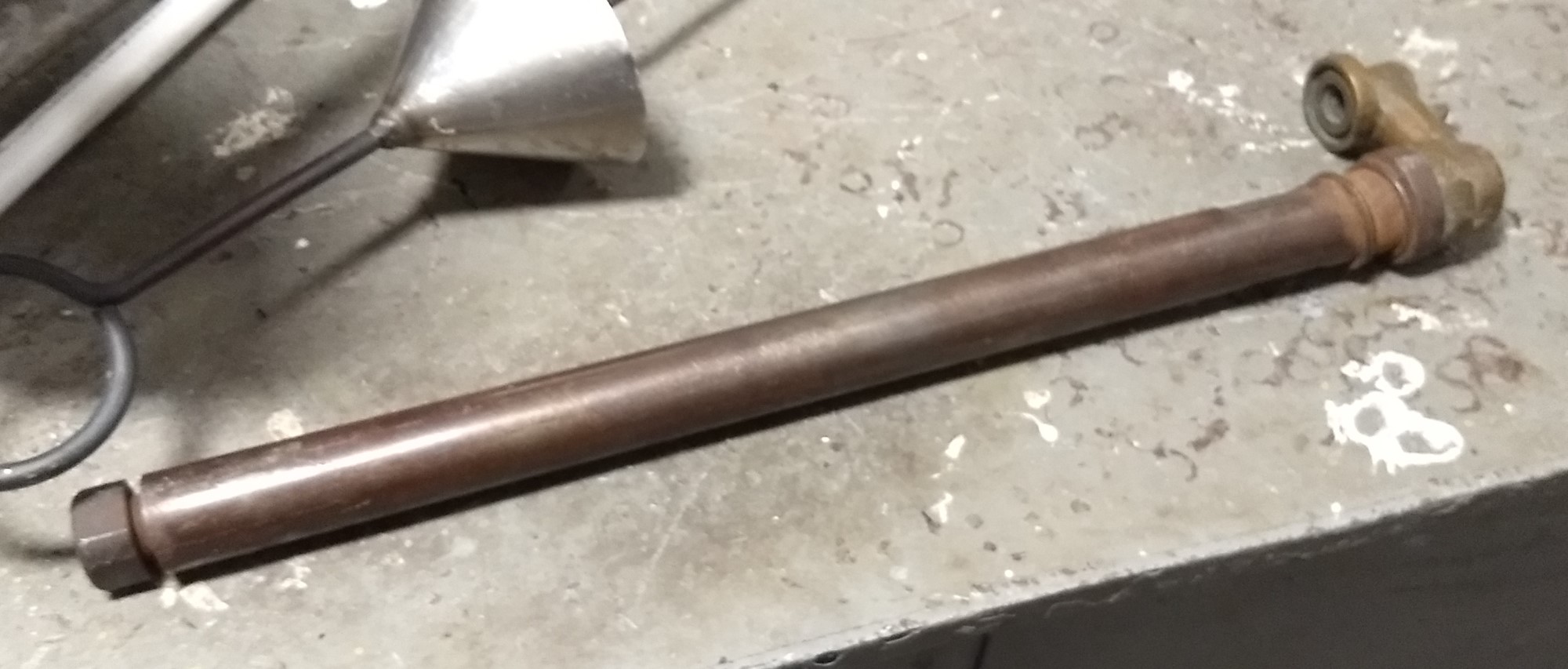
The gooseneck that delivered fuel into the burner.
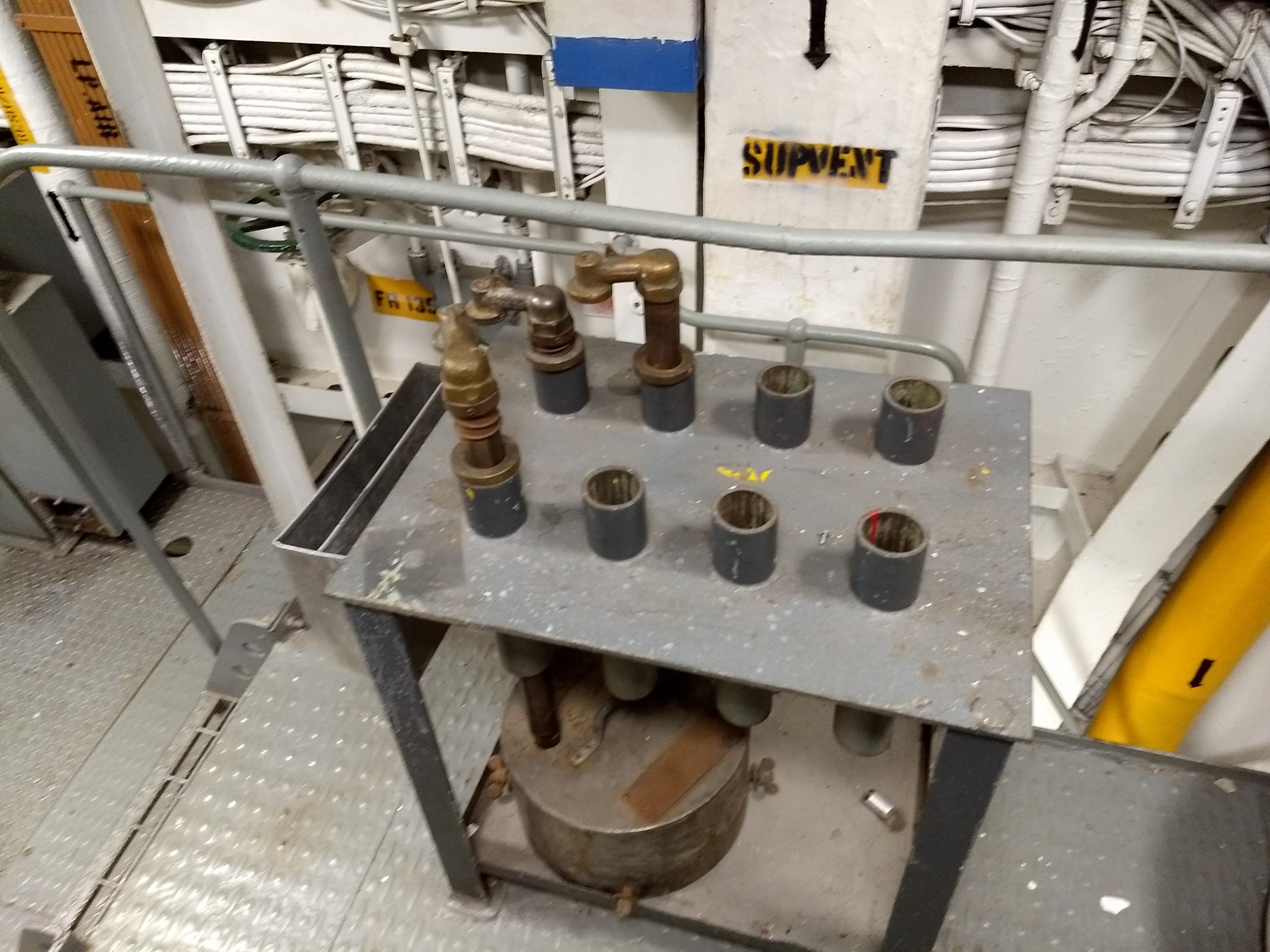
Goosenecks had small atomizer plates, which could be swapped out to change how much flame a given burner produced. This is a rack where extra goosenecks were stored.
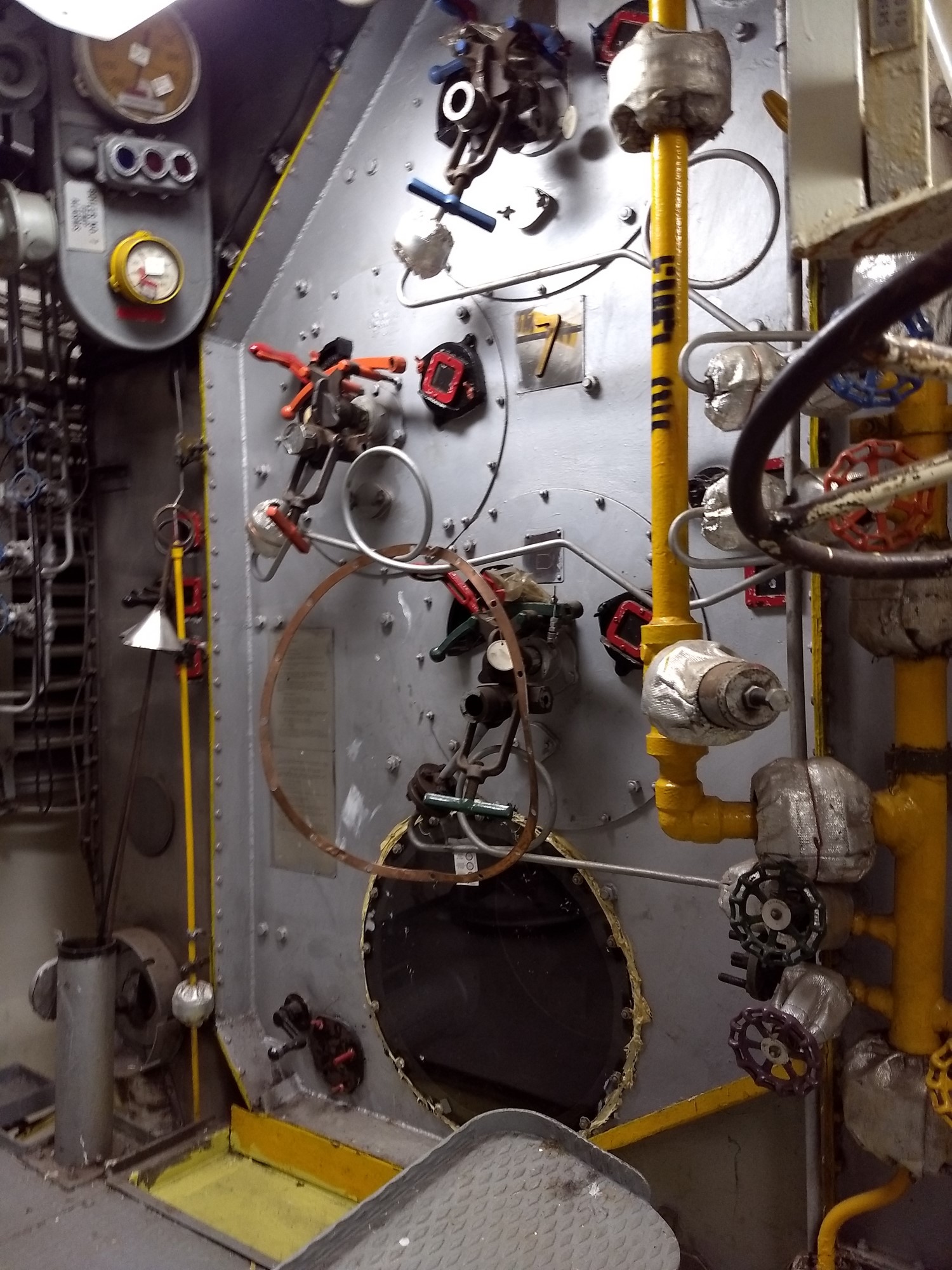
The boiler face for the superheater section, where steam is made even hotter so the system is more efficient.

This periscope is used to monitor the fuel-air mixture. The BT is looking across the exhaust at a lightbulb, which lets him see what the smoke looks like. Ideally, there shouldn't be much, and he adjusts the air registers until that is the case.
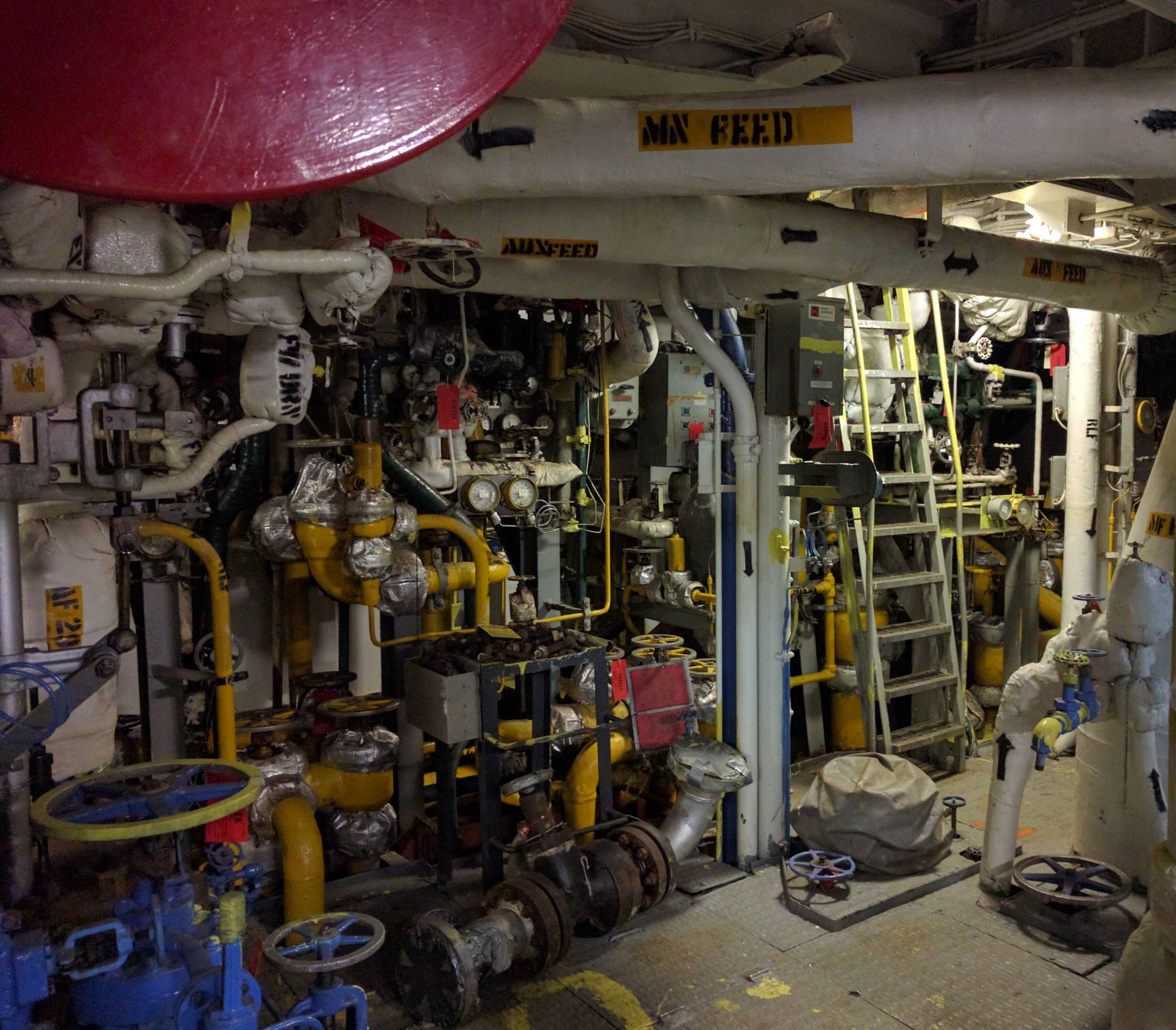
Underneath the boiler is a mass of pipes and pumps.
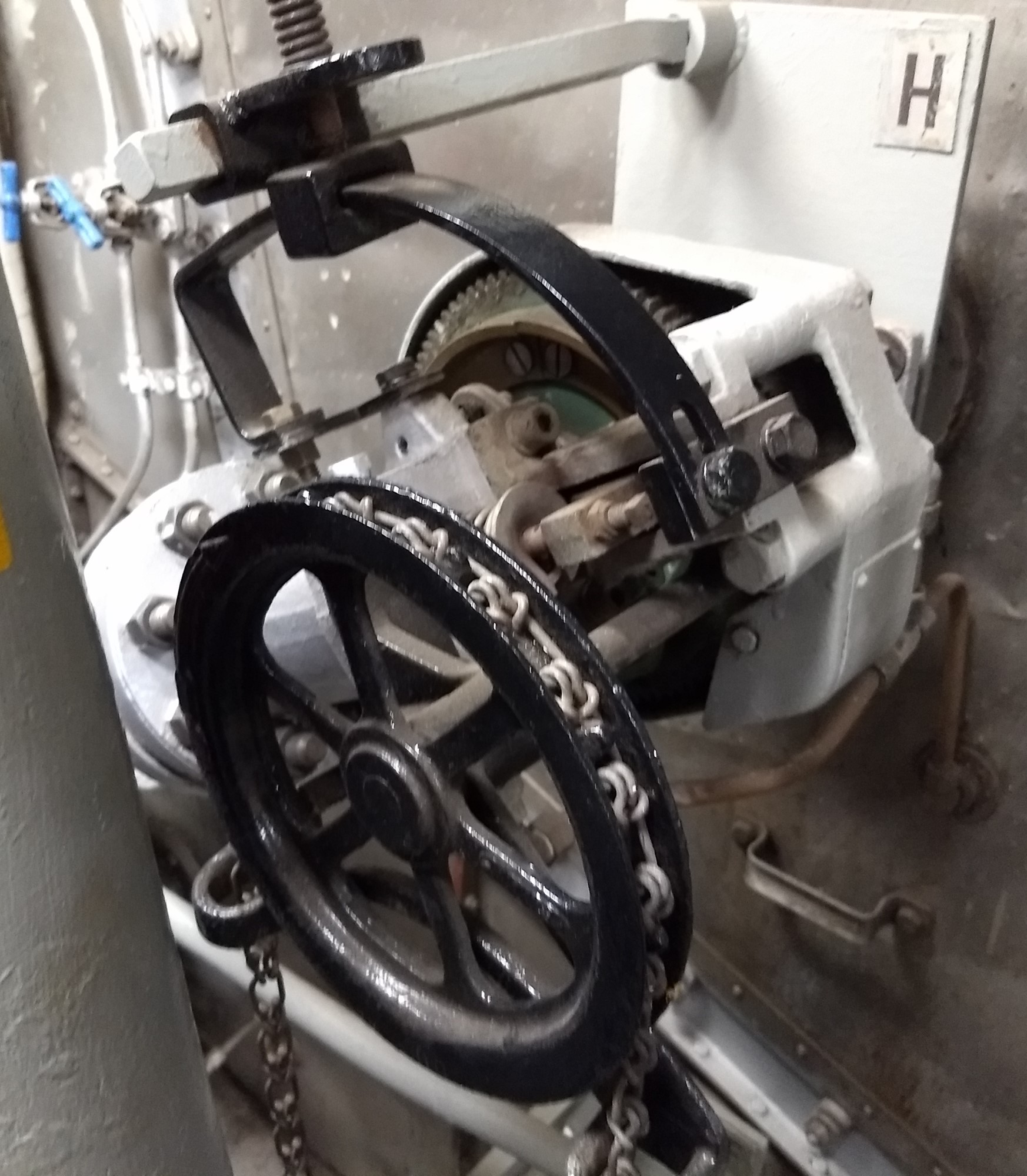
Combustion isn't perfect, and the tubes collect soot. This soot blower sprays steam over them, dislodging the soot and sending it out the stack, a very messy exercise.
The steam generated in the boiler rooms is ultimately the lifeblood of the ship. It provides motive power for the turbines and electricity for the vessel, and turns her from a dead hulk of steel into a living warship. If you wish to see Iowa's engineering spaces for yourself, sign up for the Engineering tour, which will take you down there.

Comments
At the surface level it looks exactly like the ones in USS Midway, which was a generation later.
They look the same because they are very much the same generation. In fact, while the boilers are different (and also inaccessible to the general public when I visited) the turbines (pictures coming in March) are the same.
How important was a competent crew for this kind of stuff?
Folks talk a lot about the importance of a well-drilled crew on the pointy end — rate of fire and accuracy and the like.
But could expert boiler technicians and their ilk get better speed, efficiency and/or reliability, compared to novices or a mediocre crew?
There was some advantage, although I'm not sure how big. An experienced BT is going to be able to keep good combustion, particularly when changing power, and will probably do a better job even in steady-state operation. This is probably going to show up mostly in efficiency, and of course reliability will go up with a good crew operating it.
That said, the advantages of the best crew had decreased across the board since the age of sail, as automation took the place of doing things manually, both in gunnery and in propulsion.
I was actually a burnerman and a checkman on that ship in the late 80's. I remember the soot blower being there, but I don't ever recall us ever actually using it. I do remember however, scrubbing the tubes by hand when we were in port. That was a very messy undertaking.
Interesting. I'd guess that was a result of the DFM conversion, as DFM burns a lot cleaner than bunker oil.